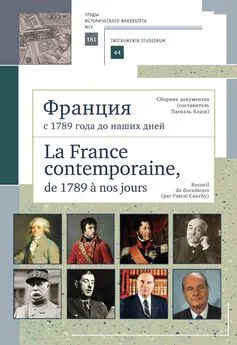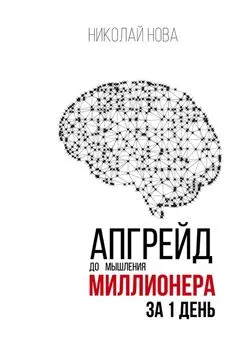Паскаль Буайе - Объясняя религию. Природа религиозного мышления
- Название:Объясняя религию. Природа религиозного мышления
- Автор:
- Жанр:
- Издательство:Литагент Альпина
- Год:2016
- Город:Москва
- ISBN:978-5-9614-4508-4
- Рейтинг:
- Избранное:Добавить в избранное
-
Отзывы:
-
Ваша оценка:
Паскаль Буайе - Объясняя религию. Природа религиозного мышления краткое содержание
Объясняя религию. Природа религиозного мышления - читать онлайн бесплатно ознакомительный отрывок
Интервал:
Закладка:
Colas, E. (1998). Just checking: Scenes from the life of an obsessive-compulsive . New York: Pocket Books.
Coley, J. D., D. L. Medin, J. B. Proffitt, E. Lynch, S. Atran. (1999). Inductive reasoning in folkbiological thought. In D. L. Medin, S. Atran (eds.), Folkbiology , 205–232. Cambridge: MIT Press.
Cosmides, L. (1989). The logic of social exchange: Has natural selection shaped how humans reason? Studies with the Wason selection task. Cognition , 31, 187–276.
Cosmides, L., J. Tooby. (1989). Evolutionary psychology and the generation of culture: II. Case study: A computational theory of social exchange. Ethology & Sociobiology , 10(1–3), 51–97.
Cosmides, L., J. Tooby. (1992). Cognitive adaptations for social exchange. In J. H. Barkow, L. Cosmides, J. Tooby (eds.), The adapted mind: Evolutionary psychology and the generation of culture , 163–228. New York: Oxford University Press.
Craik, F. I. M., T. M. Moroz, M. Moscovitch, D. T. Stuss, G. Winocur, E. Tulving, S. Kapur. (1999). In search of the self: A PET study. Psychological Science , 10, 26–34.
Crawford, C. B., D. L. Krebs (eds.). (1998). Handbook of evolutionary psychology: Ideas, issues, and applications . Mahwah, NJ: Lawrence Erlbaum Associates.
Crawford, C. B., B. E. Salter, K. L. Jang. (1989). Human grief: Is its intensity related to the reproductive value of the deceased? Ethology & Sociobiology , 10(4), 297–307.
Cronk, L. (1999). That complex whole: Culture and the evolution of behavior . Boulder, CO: Westview Press.
Daly, M., M. Wilson. (1988). Homicide . New York: Aldine.
Daniel, S. B. (1983). Tool box approach of the Tamil to the issues of moral responsibility and human destiny. In C. F. Keyes and E. V. Daniel (eds.), Karma: An anthropological inquiry , 28–62. Berkeley and Los Angeles: University of California Press.
Davidson, I., W. Noble. (1989). The archaeology of perception: Traces of depiction and language. Current Anthropology , 30, 125–155.
Davies, J. (1999). Death, burial and rebirth in the religions of antiquity (Religion in the first Christian centuries) . London: Routledge.
Dawkins, R. (1976). The selfish gene . New York: Oxford University Press.
Decety, J. (1996). The neurophysiological basis of motor imagery. Behavioural Brain Research , 77(1–2), 45–52.
Decety, J., J. Grezes. (1999). Neural mechanisms subserving the perception of human actions. Trends in Cognitive Sciences , 3, 172–178.
DeFrancis, J. (1989). Visible speech: The diverse oneness of writing systems . Honolulu: University of Hawaii Press.
Dennett, D. C., P. Weiner. (1991). Consciousness explained . Boston, MA: Little, Brown and Co.
De Renzi, E., G. di Pellegrino. (1998). Prosopagnosia and alexia without object agnosia. Cortex , 34, 403–415.
Dissanayake, E. (1992). Homo aestheticus: Where art comes from and why . New York: Free Press.
Donald, M. (1991). Origins of the modern mind . Cambridge: Harvard University Press.
Dulaney, S., A. P. Fiske. (1994). Cultural rituals and obsessive-compulsive disorder: Is there a common psychological mechanism? Ethos , 22(3), 243–283.
Dumont, L. (1959). On the different aspects or levels of Hinduism. Contributions to Indian Sociology , 3, 40–54.
Durham, W. H. (1991). Coevolution: Genes, cultures and human diversity . Stanford: Stanford University Press.
Edelstyn, N. M. J., F. Oyebode. (1999). A review of the phenomenology and cognitive neuropsychological origins of the Capgras syndrome. International Journal of Geriatric Psychiatry , 14(1), 48–59.
Eisen, J. L., K. Phillips, S. A. Rasmussen. (1999). Obsessions and delusions: The relationship between obsessive-compulsive disorder and the psychotic disorders. Psychiatric Annals , 29, 515–522.
Eliade, M. (1959). The sacred and the profane: The nature of religion . New York: Harcourt Brace Jovanovich.
Elman, J. L., E. A. Bates, M. H. Johnson, A. Karmiloff-Smith. (1996). Rethinking innateness: A connectionist perspective on development . Cambridge: MIT Press.
Endicott, K. (1979). Batek Negrito religion . Oxford: Clarendon Press.
Farah, M. J., K. D. Wilson, H. M. Drain, J. R. Tanaka. (1995). The inverted face inversion effect in prosopagnosia: Evidence for mandatory, face-specific perceptual mechanisms. Vision Research , 35, 2089–2093.
Fauconnier, G., M. Turner. (1998). Conceptual integration networks. Cognitive Science , 22(2), 133–187.
Favret-Saada, J. (1980). Deadly words: Witchcraft in the bocage . Cambridge, UK, and New York: Cambridge University Press.
Fernandez, J. (1982). Bwiti: An ethnography of the religious imagination in Africa . Princeton: Princeton University Press.
Festinger, L., H. W. Riecken, S. Schachter. (1956). When prophecy fails . Minneapolis: University of Minnesota Press.
Fiddick, L., L. Cosmides, J. Tooby. (2000). No interpretation without representation: The role of domain-specific representations and inferences in the Wason selection task. Cognition , 77, 1–79.
Fiske, A. P. (2000). Complementarity theory: Why human social capacities evolved to require cultural complements. Personality & Social Psychology Review , 4(1), 76–94.
Fiske, A. P., N. Haslam. (1997). Is obsessive-compulsive disorder a pathology of the human disposition to perform socially meaningful rituals? Evidence of similar content. Journal of Nervous & Mental Diseas e, 185(4), 211–222.
Fiske, S. T. (2000). Stereotyping, prejudice, and discrimination at the seam between the centuries: Evolution, culture, mind, and brain. European Journal of Social Psychology , 30(3), 299–322.
Fletcher, P. C., T. Shallice, C. D. Frith, R.S.J. Frackowiak. (1996). Brain activity during memory retrieval: The influence of imagery and semantic cueing. Brain , 119(5), 1587–1596.
Florian, V., M. Mikulincer. (1997). Fear of death and the judgment of social transgressions: A multidimensional test of terror management theory. Journal of Personality & Social Psychology , 73(2), 369–380.
Florian, V., M. Mikulincer. (1998). Terror management in childhood: Does death conceptualization moderate the effects of mortality salience on acceptance of similar and different others? Personality & Social Psychology Bulletin , 24(10), 1104–1112.
Fortes, M. (1987). Religion, morality and the person: Essays on Tallensi religion . Cambridge: Cambridge University Press.
Forth, G. (1998). On deer and dolphin: Nage ideas regarding animal transformation. Oceania , 68, 271–293.
Frank, R. (1988). Passions within reason: The strategic role of the emotions . New York: Norton.
Frazer, J. G. (1911). The golden bough: A study in magic and religion . (3d ed.). London: Macmillan.
Frith, C. D., R. Corcoran. (1996). Exploring 'theory of mind' in people with schizophrenia. Psychological Medicine , 26, 521–530
Fuller, C. J. (1992). The camphor flame: Popular Hinduism and society in India . Princeton: Princeton University Press.
Gambetta, D. (1994). Godfather's gossip. Archives européennes de sociologie , 35, 199–223.
Garcia, J., R. Koelling. (1966). Relations of cue to consequence in avoidance learning. Psychonomic Science , 4, 123–124.
Gargett, R. H. (1999). Middle Paleolithic burial is not a dead issue: The view from Qafzeh, Saint-Cesaire, Kebara, Amud and Dedriyeh. Journal of Human Evolution , 37, 27–90.
Gazzaniga, M. S. (1997). Conversations in the cognitive neurosciences . Cambridge: MIT Press.
Gellner, E. (1992). Postmodernism, reason and religion . London and New York: Routledge.
Gelman, R., E. Spelke, E. Meck. (1983). What preschoolers know about animate and inanimate objects. In D. S. Rogers and J. A. Sloboda (eds.), The acquisition of symbolic skills , 121–143. London: Plenum.
Gelman, S. A., P. Bloom. (2000). Young children are sensitive to how an object was created when deciding what to name it. Cognition , 76(2), 91–103.
Gelman, S. A., H. M. Wellman. (1991). Insides and essence: Early understandings of the non-obvious. Cognition , 38(3), 213–244.
Gibbs, J. C. (1991). Toward an integration of Kohlberg's and Hoffman's moral development theories. Special Section: Intersecting Conceptions of Morality and Moral Development. Human Development , 34(2), 88–104.
Gibson, T. (1986). Sacrifice and sharing in the Philippine Highlands . London: Athlone.
Gil-White, F. (2001). Are ethnic groups 'species' to the human brain? Essentialism in our cognition of some social categories. Current Anthropology , 000, 000–000.
Goff, L., H. L. I. Roediger. (1998). Imagination inflation for action events: Repeated imaginings lead to illusory recollections. Memory & Cognition , 26, 20–33.
Goody, J. (1962). Death, property and the ancestors: A study of the mortuary customs of the LoDagaa of West Africa . Stanford: Stanford University Press.
Goody, J. (1977). The domestication of the savage mind . Cambridge: Cambridge University Press.
Goody, J. (1986). The logic of writing and the organization of society . Cambridge: Cambridge University Press.
Gopnik, A., A. N. Meltzoff. (1997). Words, thoughts and theories . Cambridge: MIT Press.
Gopnik, A., A. N. Meltzoff, P. K. Kuhl. (1999). The scientist in the crib: Minds, brains, and how children learn . 1st ed. New York: William Morrow & Co.
Guthrie, S. E. (1993). Faces in the clouds: A new theory of religion . New York: Oxford University Press.
Habib, M. (1986). Visual hypoemotionality and prosopagnosia associated with right temporal lobe isolation. Neuropsychologia , 24(4), 577–582.
Halpern, A. R., R. J. Zatorre. (1999). When that tune runs through your head: A PET investigation of auditory imagery for familiar melodies. Cerebral Cortex , 9(7), 697–704.
Halverson, J. (1992). Paleolithic art and cognition. Journal of Psychology , 126(3), 221–236.
Hamayon, R. (1990). La chasse à l'âme: Esquisse d'une théorie du chamanisme sibérien .
Hamilton, W. D. (1964). The general evolution of social behavior (I and II). Journal of Theoretical Biology , 7, 1–52.
Harcourt, A. H., and F. B. de Waal (eds.). (1992). Coalitions and alliances in humans and other animals . Oxford: Oxford University Press.
Hartcup, A. (1980). Below stairs in the great country houses . London: Sidgwick and Jackson.
Hauser, M. D. (2000). The sound and the fury: Primate vocalizations as reflections of emotion and thought. In N. L. Wallin and B. Merker (eds.), The origins of music , 77–102. Cambridge: MIT Press.
Haviland, J. B. (1977). Gossip, reputation, and knowledge in Zinacantan . Chicago: University of Chicago Press.
Hayden, B. (1993). The cultural capacities of Neanderthals: A review and reevaluation. Journal of Human Evolution , 24, 113–146.
Henke, K., S. R. Schweinberger, A. Grigo, T. Klos, W. Sommer. (1998). Specificity of face recognition: Recognition of exemplars of non-face objects in prosopagnosia. Cortex , 34, 289–296.
Henkel, L. A., N. Franklin, M. K. Johnson. (2000). Cross-modal source monitoring confusions between perceived and imagined events. Journal of Experimental Psychology: Learning, Memory, & Cognition , 26(2), 321–335.
Читать дальшеИнтервал:
Закладка:





![Паскаль Буайе - Анатомия человеческих сообществ [Как сознание определяет наше бытие] [litres]](/books/1075472/paskal-buaje-anatomiya-chelovecheskih-soobchestv-kak.webp)




